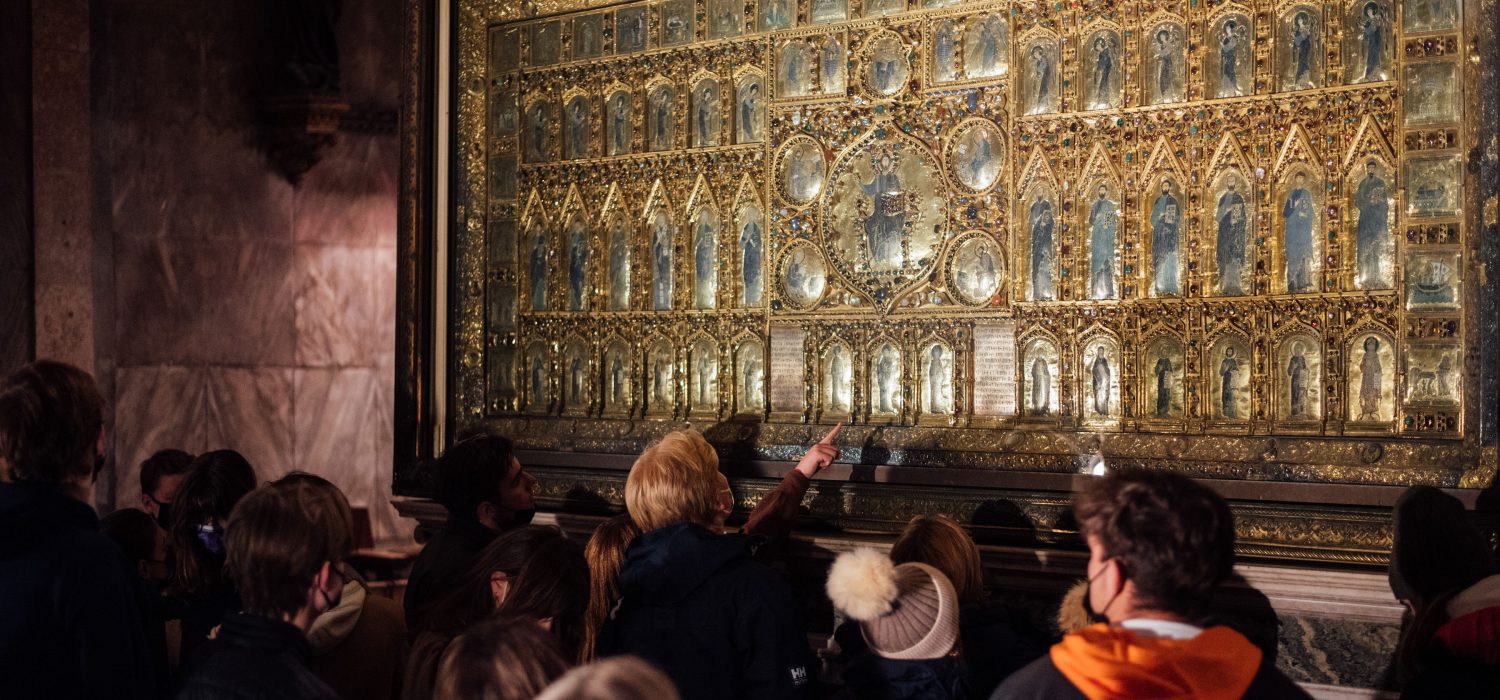-
• LONDON • OXFORD • PARIS • NICE • TUSCANY • ROME • NAPLES • SIENA • FLORENCE • VERONA • VENICE •
16 September – 06 December 2024 (12 weeks)
This is our most expansive course and influential programme. For the first six weeks students travel in the UK, France exploring art, architecture, food, culture and much more and then Tuscany, to Montepulciano, a lovely hll top town where they will follow a 2 week intensive italian course.
For the second six weeks they join other students who are studying on the Autumn Gap Year Course. Travelling across the whole of Italy from Venice to Naples
The aim is to give students the greatest experience of Italy and a better understanding the ‘art world’. It is an ambitious programme with interests that spread from the ancient world in Rome and Naples to the Renaissance in Florence and contemporary art in Venice.
You will learn about Leonardo, appreciate Titian and understand why we should all know about Michelangelo. There are dozens of artists you will come to know as well as reading great poets, ancient and modern, understanding rhetoric (Cicero) and appreciating architecture…
For those interested in the ‘art world’ or international affairs, or history, this programme is a wonderful and unique opportunity. The range of experiences greatly enhances cultural capital and, coming at the beginning of a gap year, is often considered a good first step to independent travelling.
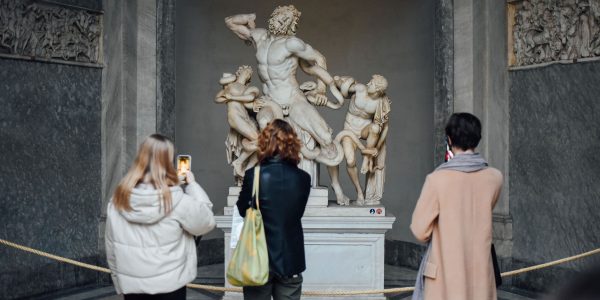
The Laocoon – Vatican Museum
Highlights:
- broaden your intellectual horizons – studying art, architecture & sculpture
- study art first hand with brilliant, unstuffy tutors
- practice the habit of creativity
- open to all: for any 18 – 22 year olds of every academic background who seek a cultivated mind
- access to once in a lifetime experiences (private visit to the Sistine Chapel and St. Mark’s Basilica)
- no classrooms and no homework: just learning in front of masterpieces!
Read “A day in the life of an AHA student” to get a better idea of what an AHA day looks like!
Enquire now Gallery Find out our dates and fees -
Who joins our semester courses?

The Autumn European Semester Course was originally conceived forAmerican students, but it is open to all. It is an amazing leap into European culture. We attract students from across the globe who are historically:
- gap year, undergraduates and those taking a semester out
- aged between 18 and 22 from every academic discipline
- a third are arts and architecture students, a third are doing other humanities and a third are scientists (usually doctors)
- students who realise that a cultured, educated mind is a mark of distinction in whatever career they pursue
- students join individually rather than in groups
Students come from every academic background which brings an essential mix to the atmosphere of the course. Chemists, historians, linguists all have something to offer and much to learn. This is a wonderful opportunity to turn a good mind into a cultivated mind with broad interests and sophisticated knowledge.
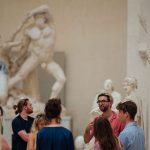
Why choose this course?
The course is based on studying art and architecture first hand in tutorials which very much mimic study at university. Small groups of 9 or fewer ensure that everyone can see and hear but, most importantly, everyone can join in discussions. Much as this course is structured, there is no exam. Instead this is a course of cultural adventure and thus perfect for those on the threshold of, or who have already begun, university.
Such first-hand experience of art is a great stepping stone into the arts. Many of our alumni have progressed as academics at university, within conservation, the auction houses, publishing and the media.
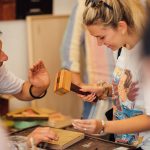
-
The Semester Course
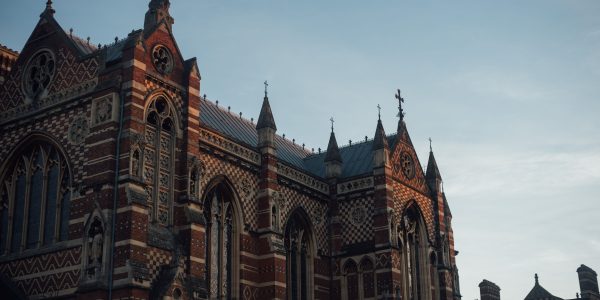
The twelve weeks comprise: 2 weeks in London, 2 nights in the English countryside, 1 week in Paris, 4 days in the South of France and two weeks in Tuscany followed by 6 weeks travelling through Rome, Naples, Siena, Florence, Verona and Venice.
The first 6 weeks
The course begins in September and travels from London to Paris to Italy over offering a unique opportunity to study themes particularly relevant to each city. It builds to a crescendo of knowledge and understanding of Europe and the classical tradition.
LONDON - OXFORD - PARIS - NICE - MONTEPULCIANO
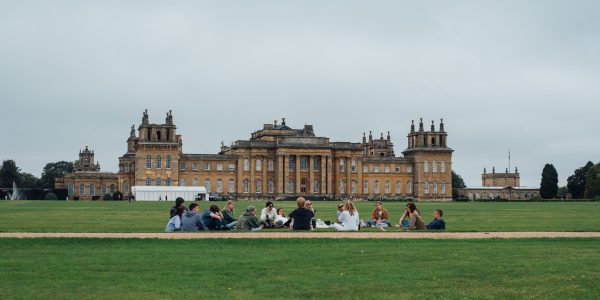
London
The aim of our stay in London is to absorb the great collections of art as well as to lay down the groundwork for the rest of European history. Our programme of visits will focus on the levers of the state: Monarchy, Republicanism, Law and the Church. Equally, we will focus on art and architecture and the literary renaissance of the English language – Shakespeare. We will visit many of the greatest monuments in London with a weekend visit to Oxford. The British Museum and the other great institutions will be on the tour, as well as lesser-known sites and private collections. In the evenings, there will be options to go to the theatre, embark on a short history of film and perhaps even go to the football.
Oxford
In Oxford, our focus extends from its timeless architecture to the intellectual heartbeat of the university. Exploring iconic landmarks and hidden treasures alike, we unravel centuries of academic and artistic heritage. From the historic Bodleian Library to inspiring college halls, each corner resonates with a rich tapestry of knowledge. Evenings promise a blend of theatrical delights, cinematic journeys, and the possibility of embracing the fervor of a football match—a perfect fusion of scholarly pursuits and vibrant cultural immersion.
Paris
Having established the foundations of Europe in London we will enjoy the flair and sheer beauty of Paris. Naturally, we will take in those great collections built of art from elsewhere, such as the Louvre, but the main thrust of Paris will be to appreciate the birth of modern painting from the Impressionists, through Post Impressionism, to Picasso and Modernism. This is the kernel of Paris and what makes it a unique cultural centre. While in Paris, we will learn much about food, to be sure.
South of France
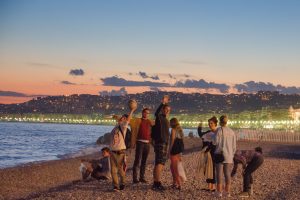 After a week in Paris we head by train to the south of France where the group will be based in Nice with day trips to the surrounding area. This area has lured actors, composers and artists for more than a century who found themselves lifted to higher planes of creativity. We will have a chance to study works by Matisse, Picasso, Chagall, Cocteau, Léger, Miró, Giacometti and Renoir.
After a week in Paris we head by train to the south of France where the group will be based in Nice with day trips to the surrounding area. This area has lured actors, composers and artists for more than a century who found themselves lifted to higher planes of creativity. We will have a chance to study works by Matisse, Picasso, Chagall, Cocteau, Léger, Miró, Giacometti and Renoir.Montepulciano
After a heady month of intense culture, we feel it would be appropriate to relax in the Italian sun for two weeks. While staying in Montepulciano, students will be able to take up courses in Italian language, drawing and cookery. The idea is to use our time well and explore new skills.
The last 6 weeks
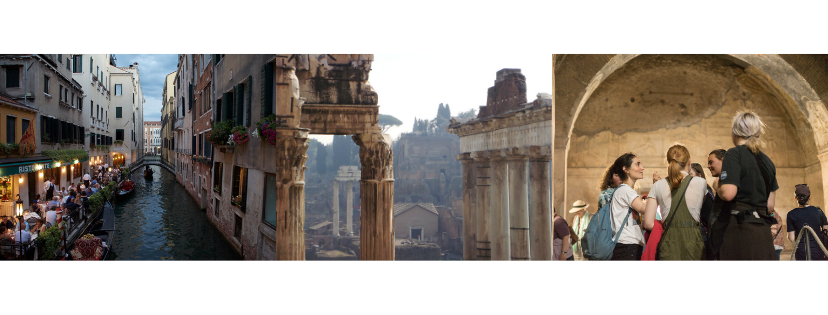 Semester Students will join, at this point, students attending the 6-week Autumn Gap Year Course.
Semester Students will join, at this point, students attending the 6-week Autumn Gap Year Course.
The Courses merge into one as they travel throughout Italy studying in depth the influential wonders of Italian art.ROME - SIENA - BOLOGNA - - FLORENCE - CASTELFRANCO - VENICE
Rome
We probably don’t need to tell you that from the Forum to the Colosseum to St Peter’s Basilica, Rome holds more mind-boggling moments than any other city. We’ll learn about the legalisation of Christianity underground in a once-illegal Christian Church, discuss Romantic Poetry at Keats’ House, visit the Vatican’s awe-inducing collections and marvel various palaces and churches to experience and understand the Counter Reformation and Baroque art.
‘I found Rome a city of bricks and left it a city of marble’ – Emperor Augustus
Siena
Siena was the first cities to ban the car in the 1960’s so the mediaeval feel of the city is undeniable. As the ban suggests, this is a strong community with an independently minded government. In art they were masters of gold ground painting and fresco painting with masters like Duccio, Simone Martini and the Lorenzetti brothers. The latter decorated the city council chamber with ‘Good and Bad Government’ which will form the corner stone of our discussions about art and power. We also plan to get out into the country a little as well as a gold ground painting workshop.
‘Siena began to occupy the sort of uneasy reverence the devout might feel towards Mecca or Rome or Jerusalem’ – Hisham Matar
Bologna
Bologna, a city of captivating charm nestled in the Emilia-Romagna region, Bologna is a gastronomic haven, earning the moniker “La Grassa” (The Fat One) for its indulgent pasta dishes, including the famed Bolognese sauce.
Bologna is the world’s oldest university, established in 1088, the University of Bologna has shaped the modern academic landscape and offers and vibrant and international student athmosphere, an experience out of the norm when travelling Italy, and a chance to understand how the locals live and what it means to be a student in Italy. The city is just a journey away from Unesco wonder, Ravenna with its Byzantine history.‘Bologna is a city that liberates the soul; it is a city where one can fall in love.’ – Giorgio Bassani
Florence
Florence is, quite simply, the cradle of the Renaissance. Over ten days you will walk the same streets of a twenty-something Michelangelo, see where the Medici rulers would pray in their private family chapel, grab a sandwich nearby Dante’s childhood home or eat ice cream in the square that an enormous bonfire was created to destroy all ‘sinful’ art known as the Bonfire of the Vanities. During our days in Florence we will try cooking, paper-marbling and drawing classes and look at the giants of Renaissance art and architecture. We will think about Michelangelo and the study of anatomy, Brunelleschi andhis inspired engineering solutions and Botticelli’s art in the context of Neo-Platonism and Humanism.‘You look around the world at geniuses, and they don’t appear randomly, they appear in genius clusters. Athens in 50 BC, Florence 1500, Silicon Valley today. This is not a coincidence.’ – Eric WeinerCastelfranco
Most tourists never quite make it to the jewel of Castelfranco. From this peaceful commune of the Veneto, we can access wonders by a short bus ride. We will discuss what makes good building in front of Palladio’s finest works as well as visiting various architectural masterpieces by the modern maverick, Carlo Scarpa. For those starting to feel christmassy at this point, early evening strolls to the local Christmas market are recommended for a warm cup of mulled wine.
‘If the architecture is any good, a person who looks and listens will feel its good effects without noticing’ – Carlo Scarpa
Venice
The city is baffling; architecturally, politically and artistically it is a place where Venetians have found their own solutions. We find ourselves drawn to Titian, Veronese and Tintoretto as well as modern art at the Peggy Guggenheim Foundation.‘Venice, it’s temples and palaces did seem like fabrics of enchantment piled to heaven.’ –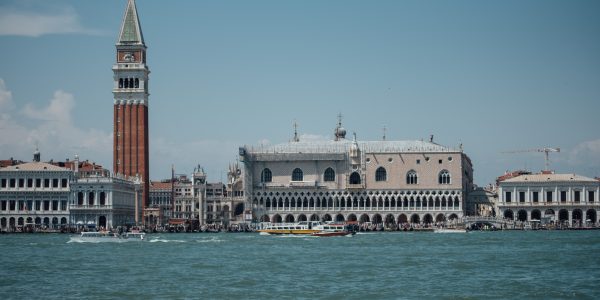
-
This course travels throughout Europe studying: painting, architecture, sculpture, textiles, gardens, mosaics, drawings and decorative arts over the following periods:

- the Ancient World
- Romanesque
- Gothic
- the Renaissance
- the Baroque
- Classicism
- Modern
- Impressionism
- Cubism
- Art Nouveau
- Contemporary
- Street art
Within these periods we study
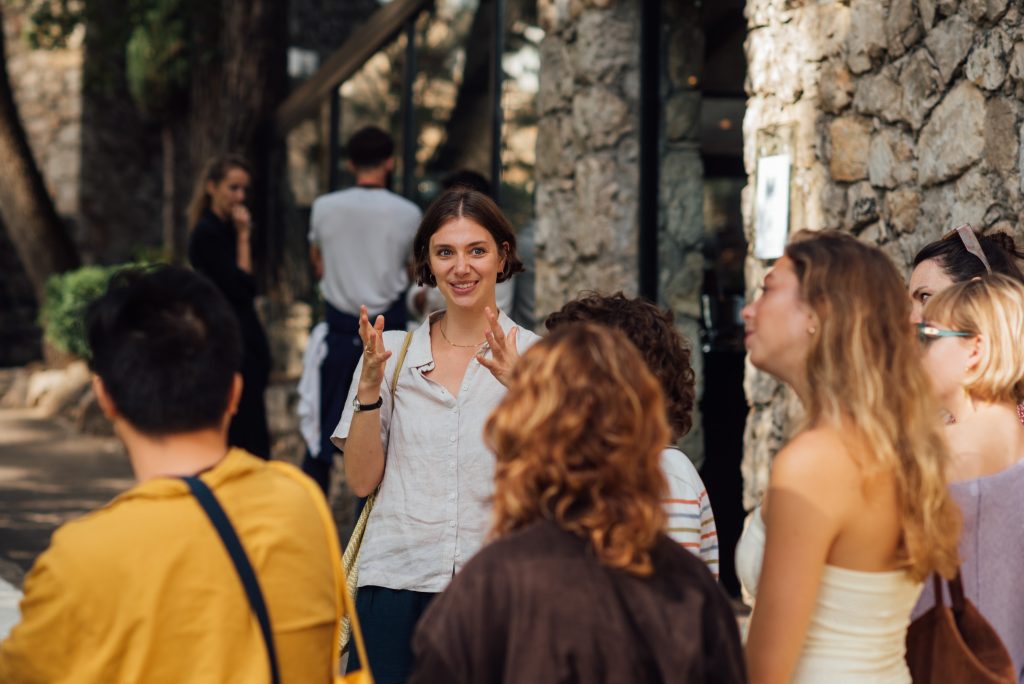
- painting techniques (fresco, oil, tempera, etc.)
- artists: their biographies, significances, influence and patronage
- connoisseurship and collections
- art criticism and propaganda
You will be in some of the most beautiful cities in the world
 London – for Modernity and Victorian
London – for Modernity and Victorian- Oxford – for Gothic and Arts and Craft movement
- Montepulciano – for italian classes
- Paris – for Impressionism, Cubism and Art Nouveau
- Nice – for modern art
- Venice – for the Renaissance and modern art
- Castelfranco – for Palladio’s Villas
- Bologno – for Byzantine and the Gothic
- Florence – for the Renaissance
- Siena – for the Gothic and politics
- Naples – Ancient Pompeii, The Baroque and modern
- Rome – Ancient, Renaissance, Baroque and modern
Please note duration in the cities above may vary according to the course or time of year.
We break up the course with day visits to:
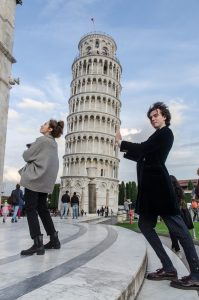
- Antibe – for Picasso
- Vince – for Matisse
- Pienza – for Renaissance Architecture
- Arezzo – for Piero della Francesca
- Padua – for Giotto
- Pasagno – for Canova
- Villas Emo and Maser – for Palladio
- Modena – for the Romanesque Cathedral
- Ravenna – for the Byzantine style
- San Gimignano– for its beautiful medieval towers
- Subiaco – for the first monastery
- Naples – for Barouque and Caravaggio
- Pompeii or Herculaneum
- Vesuvius
The programme is very carefully designed to be both chronological and thematic in order that students can fathom large swathes of history.
We teach the context of art, so we touch on the following where relevant:

- Music
- Political theory
- Economics
- Philosophy
- Theology
- Poetry
- History
- Food
- Anthropology
- Environmental Studies
We build a solid foundation of the terminology of art and history:

- architectural; vocabulary & descriptive terms
- classical and biblical narrative; myths & stories
- geographical; Italy and Europe
- basic datelines, significant families and Popes
- general themes; politics, propaganda & patronage
AHA also issues our “Shortish Notes” which are an unusual compendium of maps, significant dates, lists and descriptions of mythological gods, emperors, old and new testament figures, saints, popes and leaders. The notes include architectural terms, notes on the guilds and the family trees major families. It is a much sought after document as no such item is to be found in print.
There is also time for the following extracurricular activities:
 Painting with an artist in Oxford
Painting with an artist in OxfordPunting in Oxford
Drawing; there is always someone to help and encourage craftsmanship
Creative writing
Marbled paper making
Marble making in Florence
Italian classes in manners and comportment
Mask making in Venice
Gondola rowing lessons
Visits to concerts and the Opera and the football
Italian Language and Culture classes
Italian cooking classes
An introduction to Italian Cinema
English Romantic Poetry
I hope you will agree this course aims to make the most amazing use of your time. Quite simply, we want this to be the greatest experience and a true education.
Apply now Gallery -
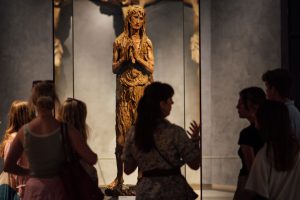
You may have perceived by now that underlying this course is a sense of the dynamic and variety. From the cities we visit, to the variety of art we see, to the reshuffling of students and the deliberate choice of tutors from different universities and of different interests. We foster a very rich experience and we believe we have succeeded in creating a very exciting course.
WHAT ARE THE TUTORS LIKE?
Illuminating, fascinating, inspiring!
Judging from thank you letters and word of mouth recommendations, we know that our tutors are a significant selling point for the course. AHA tutors are specialists, entirely approachable and have a passion for all things Italian. They are sympathetic and dedicated to encouraging the best in all students of every academic background.
Much as they wear their academic laurels lightly, they are committed to making comprehensible the artists, writers, and architects who are the real stars of the cultural galaxy.
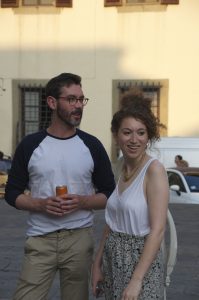 Having brilliant tutors on the course who pitch in every evenings, travel with the students and stay in the same hotel, not only means they are on hand at all times, but also allows students to imbibe the positive wonder, happiness and satisfaction that we all get from Italy.
Having brilliant tutors on the course who pitch in every evenings, travel with the students and stay in the same hotel, not only means they are on hand at all times, but also allows students to imbibe the positive wonder, happiness and satisfaction that we all get from Italy.Students should drop any ideas they have about teachers versus students, as do all our tutors – this is not a ‘school trip’. Our tutors are dynamic, enthusiastic experts from various academic fields. They roll back the disciplines of formal education and provide an inter-disciplinary approach that includes (to name a few) philosophy, history, theology and mythology.
HOW DO SMALL TUITION GROUPS WORK?
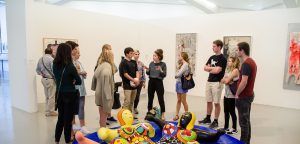 Great teaching ratios are fundamental to on-site study and AHA’s ethos. Teaching to 9 students or fewer, tutors can reach everyone, draw them into discussion and satisfy the interests and capacities of each student.
Great teaching ratios are fundamental to on-site study and AHA’s ethos. Teaching to 9 students or fewer, tutors can reach everyone, draw them into discussion and satisfy the interests and capacities of each student.Each day one or two tutorial groups set out in different directions to follow a theme according to the carefully structured itinerary. Tutors teach according to their specialist interests enabling students to appreciate different approaches to the subject. Usually a tutorial group would visit two or three sites in a morning with a break along the way.
Day by day students become more confident; understanding, enjoying and commenting on the vast visual world around them. Students are supplied with a suggested reading list and shorter notes, which are invaluable for the course and thereafter. We go to many places far from the madding crowd, some of which are public but are barely visited, others are by private appointment.
Before we have met any students, we form the tutorial groups by picking names from a hat. With each new major city these groups are reshuffled by this pre-ordained method. The dynamic of the party is therefore changed throughout the course and we find this a good way for students to get to know each other as we progress through Italy.
-
Dates & Fees Apply now
Accommodation

Our view on hotels is that it is better to stay near the middle of the wonderful cities we visit, where there is a sense of history and atmosphere. Rooms are shared with en suite bathrooms in 2’s and 3’s; occasionally we may use quadruple rooms for the shorter stays. Over the years we have built up strong relationships with family run hotels in all the cities we visit.
It’s worth calling the office to ask which hotels we are using on the course you would like to attend, but generally in Rome the hotel is next to the lively Campo dei Fiori; in Florence we stay a stone’s throw from the Duomo and in Venice we stay across the Grand Canal from St Marks.
Luggage
 You will be expected to carry your own luggage, lift it onto trains, buses, upstairs occasionally and so on. This is no idle observation; if you have a bad back, tell us about it. Most people have luggage with wheels, but be sure they are robust and up to going over cobbles. Ruck sacks are good.
You will be expected to carry your own luggage, lift it onto trains, buses, upstairs occasionally and so on. This is no idle observation; if you have a bad back, tell us about it. Most people have luggage with wheels, but be sure they are robust and up to going over cobbles. Ruck sacks are good.In the run up to your course we will send notes about what to bring but please follow the old adage that whatever you pack at first you should then halve it. Furthermore, one of the joys of travelling is to come back with trophies from your travels, whether this be clothes, books or pictures. We have had occasions when students have spent a fortune either posting luggage or spending extra fees with airlines. Both should be unnecessary.
Transport
 When we move between cities we often take the train or we hire a bus. The train is perhaps more fun, with a real sense of travel. Usually, when leaving a hotel for the station we will walk for 10 minutes or so, but if you would like a taxi, we can order one for you.
When we move between cities we often take the train or we hire a bus. The train is perhaps more fun, with a real sense of travel. Usually, when leaving a hotel for the station we will walk for 10 minutes or so, but if you would like a taxi, we can order one for you.Flights
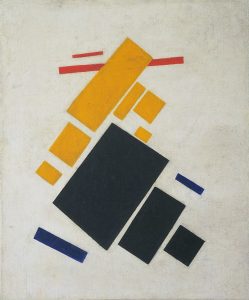 When you register, we will inform you of the flights we have chosen for the group for you to book direct with the airline. If you come by another route, we will do our best to meet you, but bear in mind that once in Italy, tutors have lots of responsibilities both in terms of teaching and pastorally and they might not be able to meet you off the plane. In any event, we will give you good instructions on how to find the hotel and how to meet us.
When you register, we will inform you of the flights we have chosen for the group for you to book direct with the airline. If you come by another route, we will do our best to meet you, but bear in mind that once in Italy, tutors have lots of responsibilities both in terms of teaching and pastorally and they might not be able to meet you off the plane. In any event, we will give you good instructions on how to find the hotel and how to meet us.For non UK students, some fly to the UK, which is a major hub, and then join the group to fly to Italy. If they arrive a day early, we can advise on where to stay if needs be.
Photo: Airplane Flying (Malevich, 1915)
Meals, Food & Wine
 The food in Italy is one of the great pleasures of an AHA course. At lunchtime, students are free to do as they please – it’s a great time to explore or draw, but often students and tutors will end up enjoying an inexpensive lunch or picnic together. It is a similar situation at supper; students are free to do as they please but, for almost all evenings, tutors will canvas opinion and organise something fun. This might be supper out, or a film or a concert. We feel that convivial suppers for students and tutors make a strong bond on the course and are part of Italian life. It is where conversation flows and we at AHA understand your interests and passions.
The food in Italy is one of the great pleasures of an AHA course. At lunchtime, students are free to do as they please – it’s a great time to explore or draw, but often students and tutors will end up enjoying an inexpensive lunch or picnic together. It is a similar situation at supper; students are free to do as they please but, for almost all evenings, tutors will canvas opinion and organise something fun. This might be supper out, or a film or a concert. We feel that convivial suppers for students and tutors make a strong bond on the course and are part of Italian life. It is where conversation flows and we at AHA understand your interests and passions.Eating, diet and allergies are issues raised on the Registration Form and it is really important that we know.
Those coming on Gap Year Courses are over 18 and therefore allowed to drink alcohol; however, as detailed in the Code of Conduct, we expect that this is done in moderation and drunkenness is not acceptable. Responsible consumption of alcohol is, in our view, a lifelong issue.
Breakfast is included within the fees though it has to be said that Italian hotels often perform some indescribable ritual to their coffee to render it questionable.
Mid way through the morning, it is usual to perk ourselves up with a break for a coffee and rest.
Spending Money
 Lunches and suppers are not included in the course price. We recommend that students bring £35 – £38 per day to cover these meals and spending money. Very occasionally, if a student has a problem with cash flow, tutors will lend money but for administrative reasons, we would be grateful if loans could be repaid before the end of the course.
Lunches and suppers are not included in the course price. We recommend that students bring £35 – £38 per day to cover these meals and spending money. Very occasionally, if a student has a problem with cash flow, tutors will lend money but for administrative reasons, we would be grateful if loans could be repaid before the end of the course.Money is best drawn regularly on ATMs and in modest amounts for fear of inadvertent loss. Pre-loaded travel money cards are a good solution to this issue because, if lost, they limit exposure to fraud.
Mentoring & Care
With tutor ratios of 1:9 or fewer, there are never less than 2 and up to 4 tutors on each course. This promotes excellent care for young adults. AHA tutors are instructed and mentored before they can be considered senior tutors or a lead tutor. Tutors stay in the same hotel, travel together and enjoy meals in the company of students. Tutors are there to help and offer advice. At all times tutors are supported by AHA’s offices in the UK.
A brief look at our tutors’ page reveals that we have tutors of a variety of ages. We feel it is important to have young tutors who are both a mentor and inspiration to young adults as well as more venerable tutors. New tutors to AHA are trained via our manual, through training tutorials and while on courses as a trainee tutor.
We will send you a Code of Conduct which lays out the understanding between students and AHA about reasonable standards of conduct.
Throughout the Gap Year & Semester courses there are one to one tutorials during which the academic progress of students are discussed. These are especially useful to encourage the development of students and form the basis for references in the future if requested.
Museums, Itineraries & Timetables
All museum fees and special entry costs are included and make up approximately 15% of the fees. Bookings for most of our visits are made in advance; this means less time spent queuing and reinforces the need for punctuality throughout the course.
Pre-Course Preparation
We will send you our list “Books worth reading, films worth watching” none of which is obligatory but which may enhance your experience of the course. In the weeks running up to your course, you will receive a note on what to bring as well as useful notes to accompany the course. AHA will also send you a watercolour set and drawing pad. Practical art is not compulsory on the course but we hope that these will be useful for those who already are happy to draw while being an encouragement to others.
Application & Registration
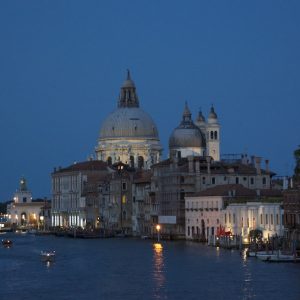 If you’re ready to apply, just go to How to Apply page to fill in the form to begin the two-part registration process. Once we have your application, we will contact you to discuss the course further. We will want to know more about you, what are your interests and plans. Importantly, it is a chance for you to ask detailed questions of us. All being well, we will send you a link to a registration form and give you details of how to lodge a deposit.
If you’re ready to apply, just go to How to Apply page to fill in the form to begin the two-part registration process. Once we have your application, we will contact you to discuss the course further. We will want to know more about you, what are your interests and plans. Importantly, it is a chance for you to ask detailed questions of us. All being well, we will send you a link to a registration form and give you details of how to lodge a deposit.By signing the registration form and returning it with a non-refundable deposit you are bound by the terms and conditions of the course. The terms and conditions require each attendee to have paid in full prior to the course date of departure. Should you need to cancel, there are clear guidelines and terms available. Where possible, and at our sole discretion, we will transfer your place to another course if needs be, having taken account of any pre-payments or unrecoverable costs.
Insurance
AHA carries public liability insurance to a total value of £5m in case AHA should cause loss or injury to a client or student. It is also essential that students should acquire sufficient insurance to cover the fees in the event that a student needs to cancel their course at a time when all or part of the fees are due. Insurance for health is also mandatory as well as repatriation. On top of this, you should insure your possessions, particularly electronics, having noted separately the make, mark and serial numbers of any valuables. You are obliged to inform AHA of the company providing the insurance cover and the Emergency Help telephone contact number. It is your responsibility to ensure that the insurance cover you purchase is suitable and adequate for your particular needs.
Payment Schedules
 At our discretion, we may offer interest free, monthly payments for a course. Full and final payment must be in our account before the course departs. Please contact the office directly to enquire about this.
At our discretion, we may offer interest free, monthly payments for a course. Full and final payment must be in our account before the course departs. Please contact the office directly to enquire about this.Scholarships & Bursaries
See our Scholarship page for details, read our blog “How to find grants for your gap year” and call us to ask about bursaries.
Risk Assessment, Responsibility
Those joining our Gap Year Courses are over 18 and young adults and can expect to be treated as such. Adult life goes with free will and free will has an element of risk within it. However, parents and students can reasonably expect AHA courses to be safe in the provision of services and tuition. To this end, we write extensive risk assessments for all our courses and we also have a crisis management plan. We follow the standards laid down by the Year Out Group and we review all our courses through questionnaires and tutor feedback. Lastly, we have public liability insurance to a limit of £5,000,000 per any one occurrence upon which we have never had to claim.
For UK residents, check the FCO website for their current risk assessments by country. For US residents, check the Smart Travel Enrollment Program (STEP) for up to date advice and help.

